This site uses cookies as defined in our Cookie Policy, by continuing to use this site you agree to their use.
Continue
| Arrive | Depart | ||||||
| 23rd23 | JanJan | 202727 | Tokyo, Japan, embark on the Sapphire Princess | 16:00 | |||
Lights, sushi, manga! Sprawling, frenetic, and endlessly fascinating, Japan’s capital is a city of contrasts. Shrines and gardens are pockets of calm between famously crowded streets and soaring office buildings. Mom-and-pop noodle houses share street space with Western-style chain restaurants and exquisite fine dining. Shopping yields lovely folk arts as well as the newest electronics. And nightlife kicks off with karaoke or sake and continues with techno clubs and more. Whether you seek the traditional or the cutting edge, Tokyo will provide it. | |||||||
| 24th24 | JanJan | 202727 | At Sea | ||||
| 25th25 | JanJan | 202727 | Kagoshima, Japan | 09:00 | 18:00 | ||
Kagoshima city is the capital of Kagoshima prefecture and also Kyushu’s southernmost major city. This city is often compared to its Italian sister city Naples, due to its’s similarities such as mild climate and active volcano, Sakurajima. Sakurajima is one of the most renowned active volcanos not only in Japan but also in the whole entire world. This smoking Sakurajima is centred in Kinko Bay and is one of the main symbols of this prefecture. We cannot talk about Sakurajima without the history of continuous eruption. Sakurajima used to be an isolated island; however, the land has banded together with Osumi peninsula from the eruption in 1914. You may have a chance to see the smoke coming from the top of Sakurajima depending on the weather condition. Not only does the scenery of Sakurajima represent the beauty of Kagoshima City but Senganen garden is also symbolic to elegance in the Kagoshima region. This Japanese garden was constructed by a feudal lord, Mitsuhisa Shimazu, as a guest house of the Kagoshima castle which attracts many visitors for its splendid view. | |||||||
| 26th26 | JanJan | 202727 | At Sea | ||||
| 27th27 | JanJan | 202727 | Miyakejima, Japan | 07:00 | 18:00 | ||
| 28th28 | JanJan | 202727 | At Sea | ||||
| 29th29 | JanJan | 202727 | Kaohsiung, Taiwan | 07:00 | 19:00 | ||
Kaohsiung is Taiwan’s second largest city, its biggest seaport, and the world’s fourth largest container port. It entered the 21st century as a newly emerging international metropolis. In the forefront of Taiwan’s expansion and modernisation efforts are the China Steel Corporation and China Shipbuilding. They are perfect examples of what Taiwan’s export-oriented economy is all about. The Love River, which has seen some recent landscaping, adds to the beauty of the city. Coffee shops along its banks offer good opportunities to view the river’s activities and enjoy a nice breeze. A 495-feet (150 metres)-long urban corridor of light, known as Urban Spotlight, was designed by local artists who wanted to make light and shadows the theme of the hall. The result is an urban space in the Central Park area teeming with artistic vision. A very important event in Taiwan’s recent history occurred here in 1979, and is known as the Kaohsiung Incident. It was the day of the first major human rights celebration on the island. Until that time, the authorities had never allowed any expression of discontent. When the day came, however, the celebration ended in chaos when police encircled the peaceful crowd and started using teargas, and pro-government instigators incited violence. Kuomintang (KMT) authorities used this as an excuse to round up all well-known opposition leaders and imprison them. Although it was hardly noticed internationally, it is recognised locally as an important turning point in the island’s transition to democracy, and it galvanised the Taiwanese people into action. | |||||||
| 30th30 | JanJan | 202727 | At Sea | ||||
| 31st31 | JanJan | 202727 | Hong Kong, Hong Kong | 07:00 | 22:00 | ||
The Hong Kong Island skyline, with its ever-growing number of skyscrapers, speaks to ambition and money. Paris, London, even New York were centuries in the making, while Hong Kong's towers, bright lights, and glitzy shopping emporia weren't yet part of the urban scene when many of the young investment bankers who fuel one of the world's leading financial centers were born. Commerce is concentrated in the glittering high-rises of Central, tucked between Victoria Harbor and forested peaks on Hong Kong Island's north shore. While it's easy to think all the bright lights are the sum of today's Hong Kong, you need only walk or board a tram for the short jaunt west into Western to discover a side of Hong Kong that is more traditionally Chinese but no less high-energy. You'll discover the real Hong Kong to the east of Central, too, in Wan Chai, Causeway Bay, and beyond. Amid the residential towers are restaurants, shopping malls, bars, convention centers, a nice smattering of museums, and—depending on fate and the horse you wager on—one of Hong Kong's luckiest or unluckiest spots, the Happy Valley Racecourse. Kowloon sprawls across a generous swath of the Chinese mainland across Victoria Harbour from Central. Tsim Sha Tsui, at the tip of Kowloon peninsula, is packed with glitzy shops, first-rate museums, and eye-popping views of the skyline across the water. Just to the north are the teeming market streets of Mong Kok and in the dense residential neighborhoods beyond, two of Hong Kong's most enchanting spiritual sights, Wong Tai Sin Temple and Chi Lin Nunnery. As you navigate this huge metropolis (easy to do on the excellent transportation network), keep in mind that streets are usually numbered odd on one side, even on the other. There's no baseline for street numbers and no block-based numbering system, but street signs indicate building numbers for any given block. | |||||||
| 1st01 | FebFeb | 202727 | At Sea | ||||
| 2nd02 | FebFeb | 202727 | Chan May, Vietnam | 07:00 | 18:00 | ||
Hue (pronounced hway), bisected by the Perfume River and 13 km (8 mi) inland from the South China Sea, in the foothills of the Annamite Mountains (Truong Son Mountains), stands as a reminder of Vietnam's imperial past. The seat of 13 Nguyen-dynasty emperors between 1802 and 1945, Hue was once Vietnam's splendid Imperial City. Although it was devastated by the French in the 19th century and again by fighting between the Vietnamese Communists and the Americans in the 20th, the monument-speckled former capital has a war-ravaged beauty. One can still imagine its former splendor, despite gaping holes in its silhouette. Hue is a UNESCO World Heritage Site, and the city's gems are slowly being restored. | |||||||
| 3rd03 | FebFeb | 202727 | At Sea | ||||
| 4th04 | FebFeb | 202727 | Phu My, Vietnam | 07:00 | 17:30 | ||
| 5th05 | FebFeb | 202727 | At Sea | ||||
| 6th06 | FebFeb | 202727 | Singapore, Singapore, disembark the Sapphire Princess | 07:00 | |||
The main island of Singapore is shaped like a flattened diamond, 42 km (26 miles) east to west and 23 km (14 miles) north to south. Near the northern peak is the causeway leading to West Malaysia—Kuala Lumpur is less than four hours away by car. It is at the southern foot where you will find most of the city-state’s action, with its gleaming office towers, working docks, and futuristic "supertrees," which are solar-powered and serve as vertical gardens. Offshore are Sentosa and over 60 smaller islands, most uninhabited, that serve as bases for oil refining or as playgrounds and beach escapes from the city. To the east is Changi International Airport, connected to the city by metro, bus, and a tree-lined parkway. Of the island's total land area, more than half is built up, with the balance made up of parkland, farmland, plantations, swamp areas, and rain forest. Well-paved roads connect all parts of the island, and Singapore city has an excellent, and constantly expanding, public transportation system. The heart of Singapore's history and its modern wealth are in and around the Central Business District. The area includes the skyscrapers in the Central Business District, the 19th-century Raffles Hotel, the convention centers of Marina Square, on up to the top of Ft. Canning. Although most of old Singapore has been knocked down to make way for the modern city, most colonial landmarks have been preserved in the CBD, including early-19th-century buildings designed by the Irish architect George Coleman. | |||||||
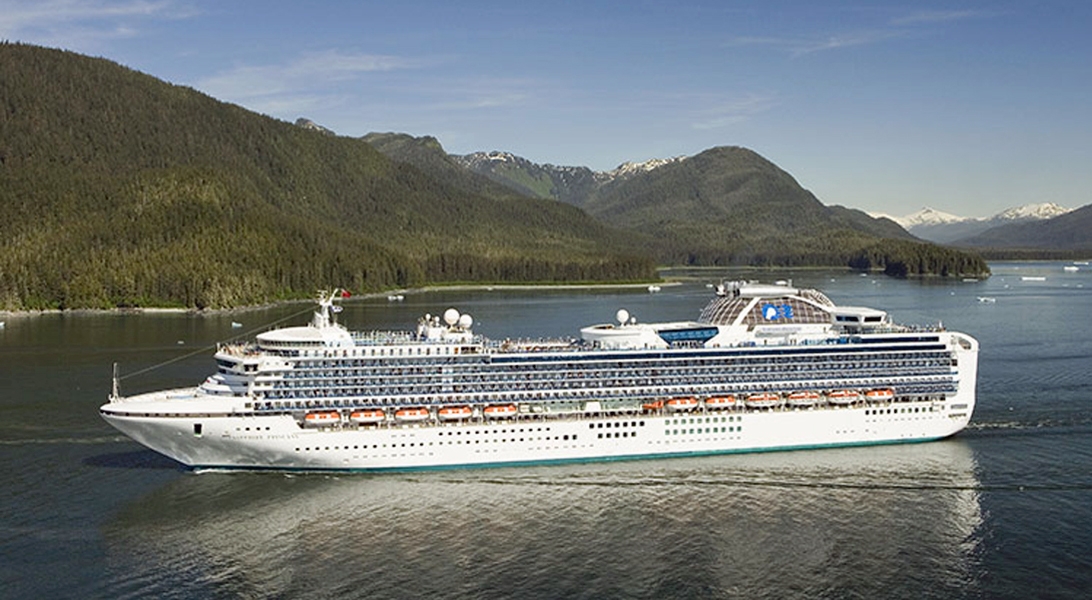
The images shown are for illustration purposes only and may not be an exact representation of what you find on the ship.
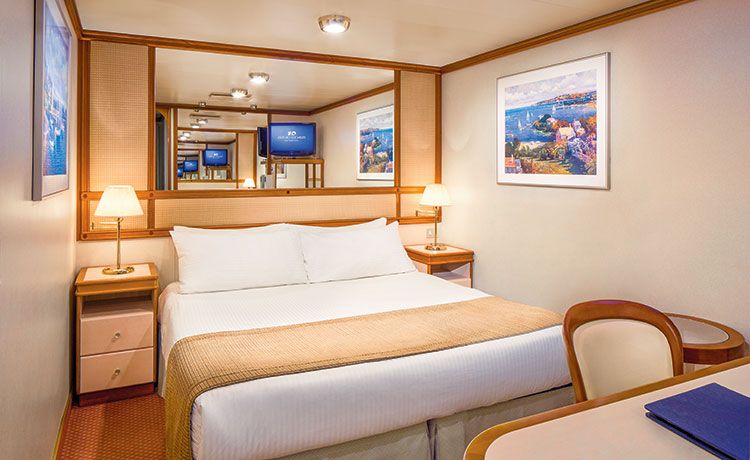
| Grade Code | From | To | |
| IF | Interior | £1,099 | £1,799 |
| IE | Interior | £1,130 | £1,830 |
| ID | Interior | £1,150 | £1,850 |
| IC | Interior | £1,171 | £1,871 |
| IB | Interior | £1,190 | £1,890 |
| IA | Interior | £1,211 | £1,911 |
These staterooms are the perfect place to recharge your batteries. Our most affordable option, featuring two twin beds or a queen-size bed. Other amenities include a refrigerator, hair dryer, TV, closet and bathroom with shower.
Stateroom Features

| Grade Code | From | To | |
| OZ | Oceanview (Obstructed) | £1,307 | £2,007 |
| OY | Oceanview (Obstructed) | £1,334 | £2,034 |
| OW | Oceanview (Obstructed) | £1,360 | £2,060 |
| OV | Oceanview (Obstructed) | £1,386 | £2,086 |
| OF | Oceanview | £1,579 | £2,279 |
| OC | Oceanview | £1,690 | £2,390 |
| O5 | Premium Oceanview | £1,804 | £2,504 |
Enjoy the added benefit of a view of the ocean from either a picture window or porthole that brings in natural light. This stateroom includes all the amenities of an interior room.
Stateroom Features
▲3rd/4th berths available in select cabins.
†Charges apply for balcony dinner, pizza delivery and beverages. Subject to change.
Note: Some categories have portholes versus picture windows. Some stateroom views are partially to fully obstructed.
The images shown are for illustration purposes only and may not be an exact representation of what you find on the ship.
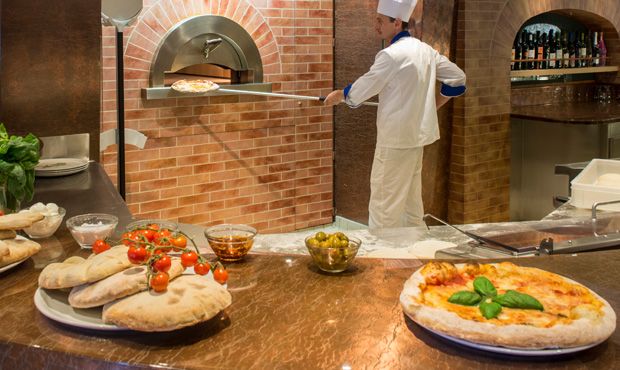
Named for our former Master Chef, Alfredo Marzi and voted "Best Pizza at Sea" by USA TODAY, this charming sit-down venue offers an enticing menu of freshly prepared individual-size pizzas along with beer and wines by the glass. The open kitchen design allows you to watch as the chefs create pizza by hand and serve them straight out of the oven.
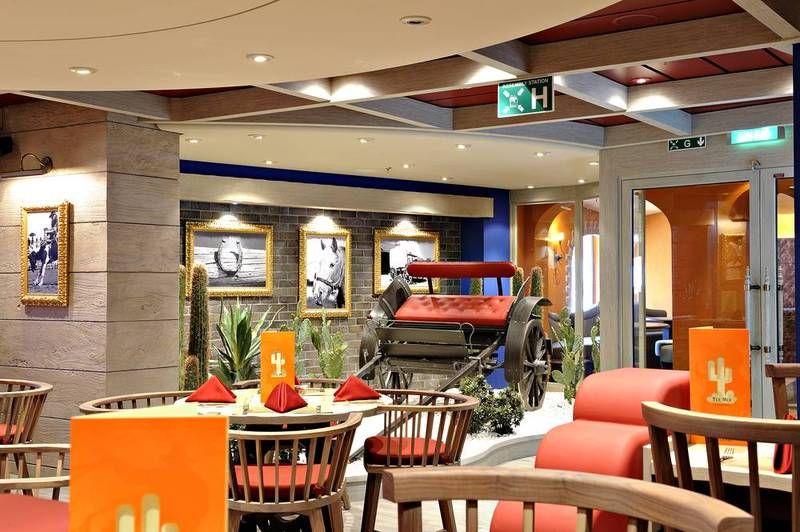
The Santa Fe Dining room is open for anytime dining at dinner time between 5.30pm and 10pm.
Santa Fe's speciality is chicken or steak fajitas.
The option of an 'always available menu' is also provided including steaks, chicken breast and salmon, along with healthy options.
The Santa Fe Dining Room is on the 6th Deck of the Sapphire Princess.
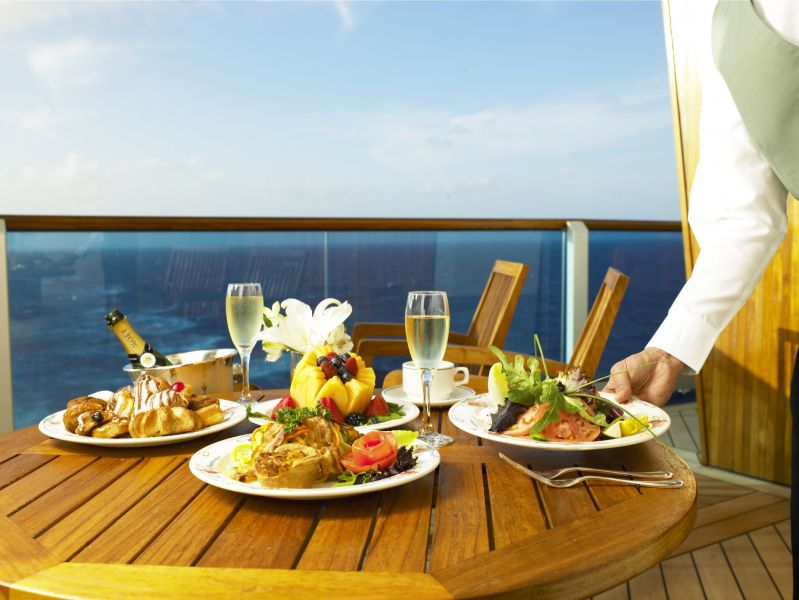
Choose a luxurious breakfast or experience the “ultimate” romantic dinner at sea: a sumptuous multi-course meal, including succulent lobster tail and juicy steak, your beverage of choice, hors d’oeuvres, all served right on the privacy of your own balcony by our dedicated waitstaff. Treat yourself to this unparalleled indulgence and savour food, views and memories that will never be forgotten.
Additional charges apply.
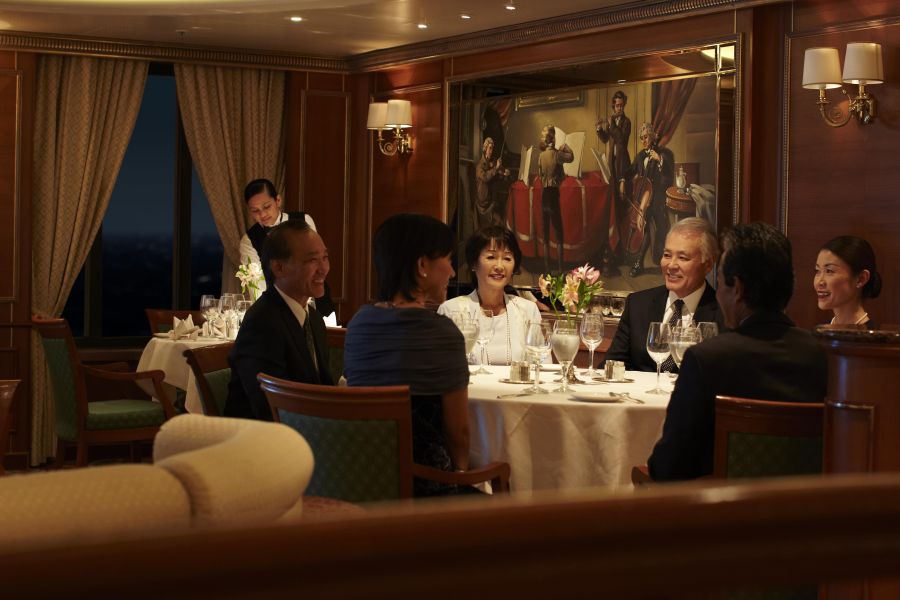
The Vivaldi Dining Room is open for traditional dining at 5.30pm or anytime dining between 8pm and 10pm.
The Vivaldi Dining Room is on the 5th Deck of the Sapphire Princess.
The images shown are for illustration purposes only and may not be an exact representation of what you find on the ship.
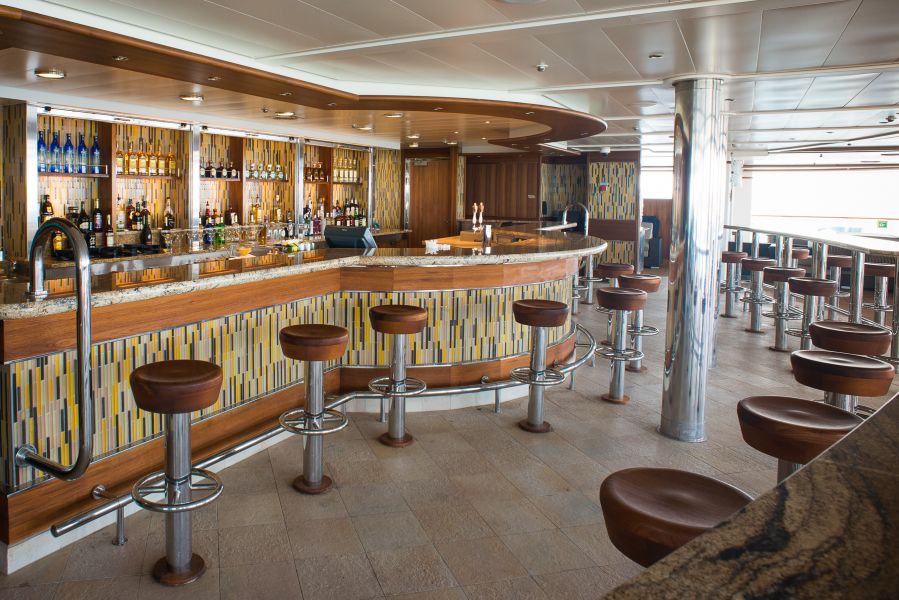
The Mermaids Tail bar serves the Neptune pool area and is located forward of the 14th Deck.
It also sells a small selection of sweets and chocolates, for guests to purchase whilst watching the movies under the stars at night on the large overhead TV screen.
The Oasis Bar serves the Sports Deck (16) and is located aft of the deck in between the two hot tubs.
Outrigger Bar is an outside bar aft of the 14th Deck serving the Horizon Terrace sundeck and pool below.
Calypso Bar serves the Calypso pool midship on the 14th Deck also.

When the sun goes down and the moon comes up, it’s time to get your feet movin’ and your heart pumpin’ at Club Fusion. A little eclectic and a whole lot of fun, the dance floor lights and booming sound system invite you to get up and show off your moves and grooves. Karaoke contests, live performances and theme-parties like “60s British Invasion” are just a few of the nightly events that will have you on your feet.
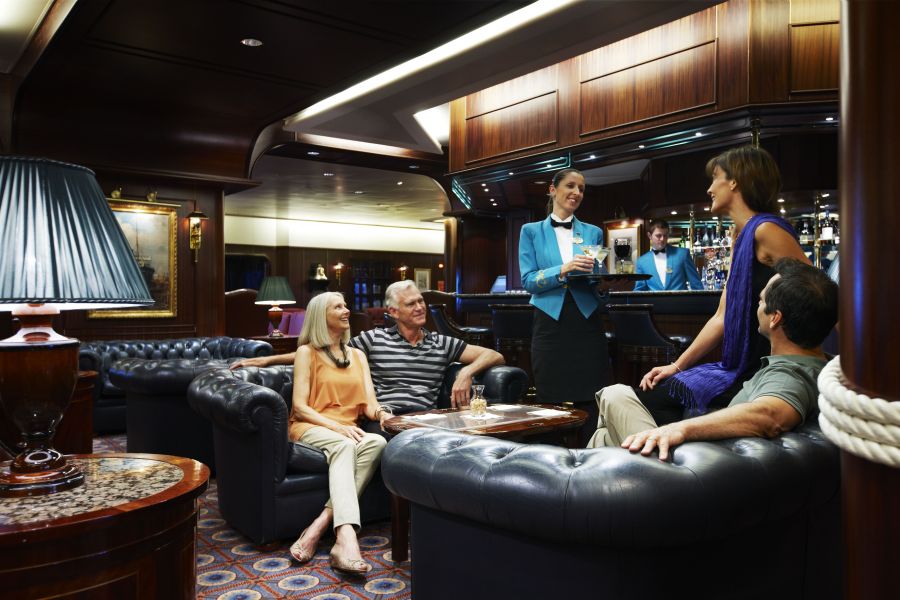
The Wheelhouse bar, located on the 7th Deck outside the theatre, serves premium beers, wines and spirits and is decorated in the style of a gentleman's club with leather armchairs and nautical artefacts.
It has its own dance floor, bar and stage where live music is played from.
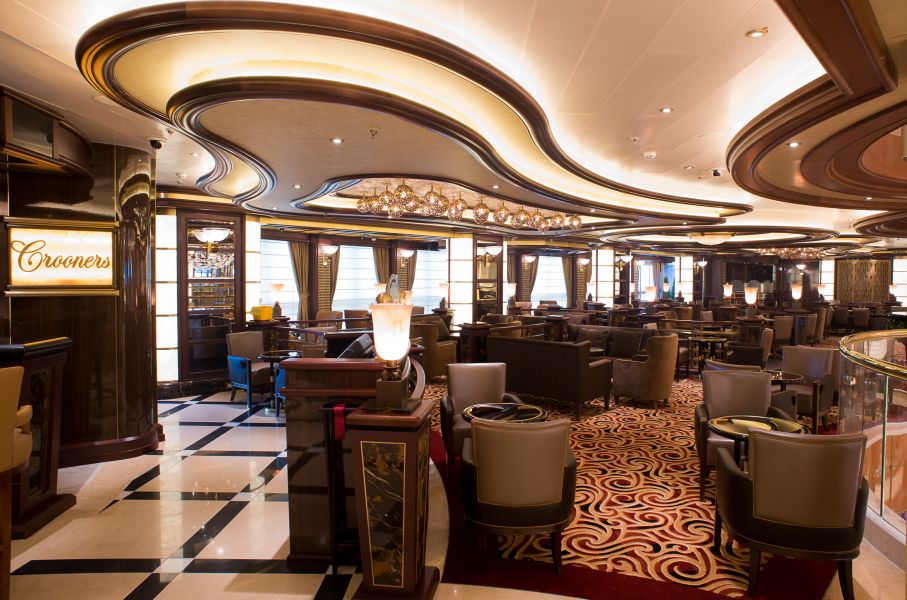
The Crooners Lounge and Bar, located midship on deck 7 opens from 1pm onwards and is reminiscent of a classic Martini bar.
Evening entertainment features live piano music with requests and name that tune elements. Here they also offer an enticing menu of 75 martinis, plus entertainers at spectacular duelling glass pianos.
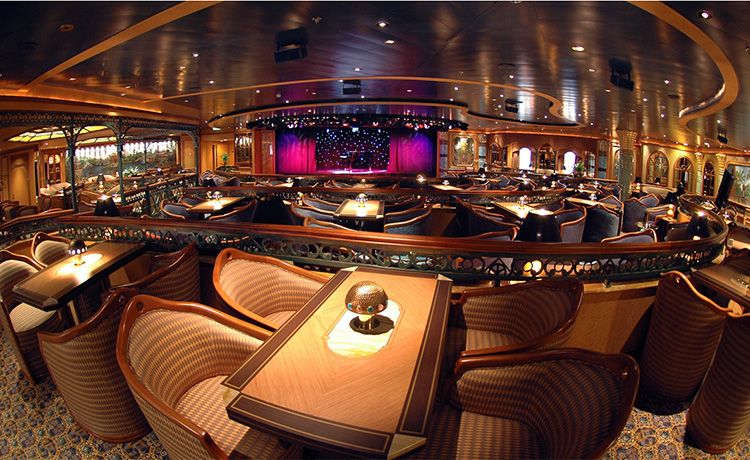
Explorers Lounge on the 7th Deck is Sapphire Princess' second entertainment venue with its own dance floor, bar serving wine and cocktails and stage.
Entertainment on offer ranges from trivia quizzes during the day to comedians, live bands and themed nights in the evening.
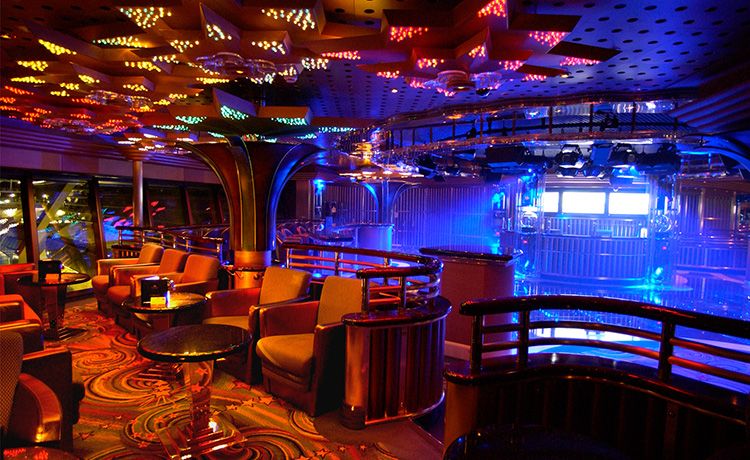
Hot music and cool cocktails set to a DJ spinning popular club tunes is the ideal setting for a night of dancing. Gleaming, ultra modern and ultra cool, this hot spot invites a little stargazing while the colourful neon dance floor invites everyone to get up and boogie down. Boasting panoramic views from its vantage point 15 decks above the sea, it’s the perfect place for dancing and socialising.
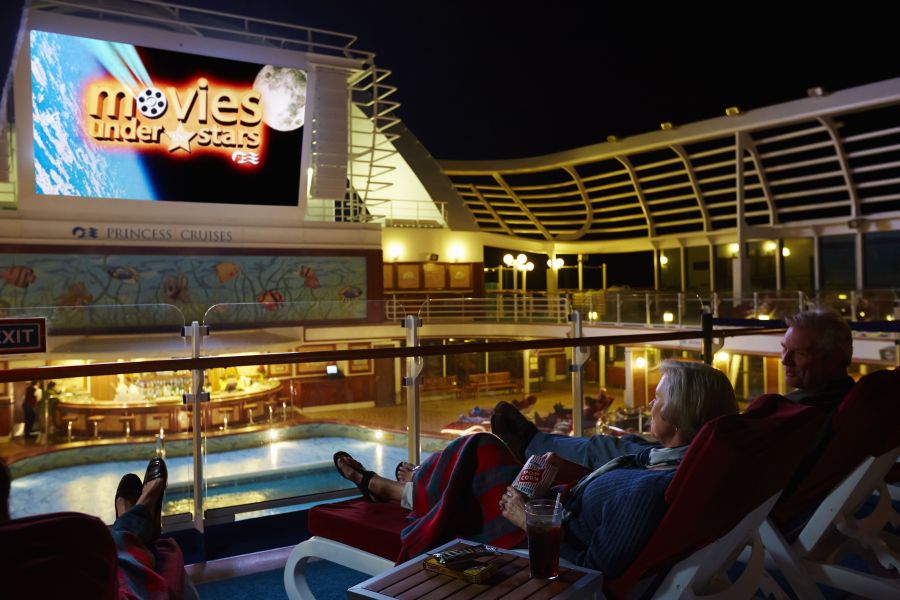
Throughout the day and night, our exclusive open-air poolside amphitheatre is the go-to destination for feature films, thrilling concerts and exciting sporting events such as live football games. Cozy up under a fleece blanket in the comfortable lounger and feast on complimentary fresh-popped popcorn in the evening or delicious cookies and milk during the day, and enjoy that exciting car chase or mystery thriller on the giant screen.
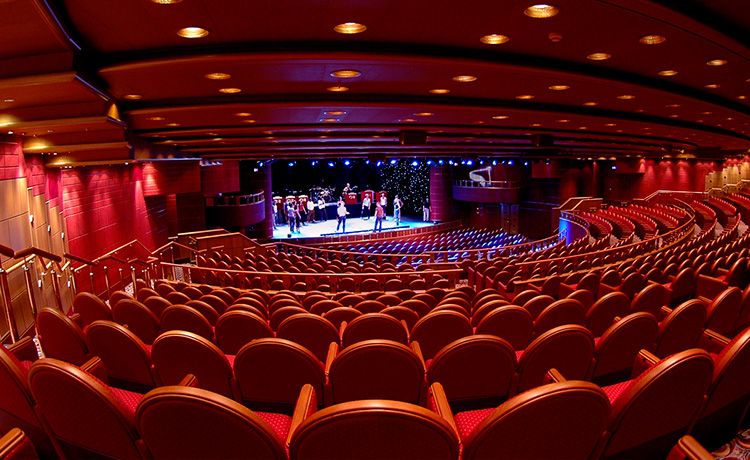
With dazzling stage sets, artists from around the globe, modern hits and timeless classics, the Princess Theatre, our largest theatre yet, showcases lavish, original productions with dynamic cast members in sumptuous surroundings. In this ultramodern theatre, relax in a plush seat with unobstructed sight lines as the velvet curtain goes up, a state-of-the-art lighting system illuminates the stage, and it’s on with the show!
The images shown are for illustration purposes only and may not be an exact representation of what you find on the ship.
The images shown are for illustration purposes only and may not be an exact representation of what you find on the ship.
| 14 nights aboard the Sapphire Princess | |||
| Evening entertainment & Broadway style shows | |||
| Complimentary daily afternoon tea | |||
| Choice of traditional or anytime dining | |||
| Complimentary 24-hour room service | |||
| Speciality Restaurants (charges may apply) | |||
| Drinks package available | |||
| Port Taxes and Fees | |||
 | ABTA and ATOL Protection* | ||
Date 23rd Jan 2027 |
Nts 14 |
Interior £1,099pp |
Oceanview £1,307pp |
Balcony £1,879pp |
Suite £2,319pp |
Date 23rd Jan 2027 |
Nts 14 |
Interior £1,099pp |
Oceanview £1,307pp |
Balcony £1,879pp |
Suite £2,319pp |
| Interior staterooms from | £1,099pp | ||
| IF | Interior | £1,099pp | |
| ID | Interior | £1,150pp | |
| IB | Interior | £1,190pp | |
| IE | Interior | £1,130pp | |
| IA | Interior | £1,211pp | |
| IC | Interior | £1,171pp | |
| Oceanview staterooms from | £1,307pp | ||
| OC | Oceanview | £1,690pp | |
| OF | Oceanview | £1,579pp | |
| OV | Oceanview (Obstructed) | £1,386pp | |
| OW | Oceanview (Obstructed) | £1,360pp | |
| OZ | Oceanview (Obstructed) | £1,307pp | |
| OY | Oceanview (Obstructed) | £1,334pp | |
| O5 | Premium Oceanview | £1,804pp | |
| Balcony staterooms from | £1,879pp | ||
| BF | Balcony | £1,879pp | |
| BA | Balcony | £2,097pp | |
| BC | Balcony | £2,008pp | |
| BD | Balcony | £1,964pp | |
| BB | Balcony | £2,053pp | |
| B4 | Premium Balcony | £2,142pp | |
| BE | Balcony | £1,919pp | |
| B2 | Premium Balcony | £2,142pp | |
| Suite staterooms from | £2,319pp | ||
| S2 | Owner's Suite |  | |
| S4 | Penthouse Suite | £4,084pp | |
| S5 | Premium Suite |  | |
| S6 | Vista Suite | £3,529pp | |
| S1 | Grand Suite |  | |
| S8 | Two Bedroom Family Suite |  | |
| S3 | Penthouse Suite |  | |
| M1 | Club Class Mini-Suite | £2,853pp | |
| MD | Mini-Suite | £2,426pp | |
| ME | Mini-Suite | £2,319pp | |
| MB | Mini-Suite | £2,643pp | |
Fusion Cruises when selling travel arrangements is a trading name of The Midcounties Co-operative Ltd. Fusion Cruises is an Accredited Body Member of Midcounties Co-operative Travel Consortium. (ABTA:P6652, ATOL:6053).
Book with Confidence. We are a Member of ABTA which means you have the benefit of ABTA’s assistance and Code of Conduct.
Some of the flights and flight-inclusive holidays on this website are financially protected by the ATOL scheme but ATOL protection does not apply to all holiday and travel services offered on this website. This website will provide you with information on the protection that applies in the case of each holiday and travel service offered before you make your booking. If you do not receive an ATOL Certificate then the booking will not be ATOL protected. If you do receive an ATOL Certificate but all parts of your trip are not listed on it, those parts will not be ATOL protected. Please see our booking conditions for information, or for more information about financial protection and the ATOL Certificate go to: www.caa.co.uk
